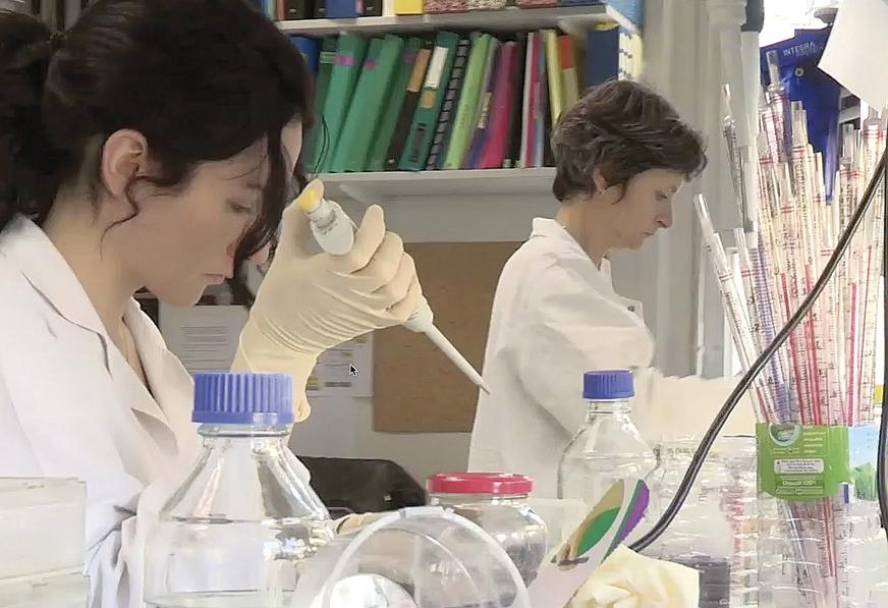Gender in science and technology
Many studies show that gender continues to make a big gap when choosing studies between boys and girls. The girls are more prone to the themes of humanities and boys to science and technology. The gender difference is clearly manifested in the choice of studies after the completion of the compulsory school period. Both in professional training and in pre-university and university levels, the distribution of gender in selected studies is observed perfectly. In the university, in the health sciences, more than three quarters of students are women, but in engineering and architecture most are men. In total, the technical teachings - especially engineering and architectures - are very masculinized.
In general, studies in which the number of women is greater are those related to roles or elements considered socially as feminine, such as education or physical, emotional, food or social care. This tendency to the rest, characteristic of the feminized grades, seems not to root well in the grades in which most students are boys, since they have a much more business, industrial and instrumental character, marked by the male tradition. If we read these data from a gender perspective, the invisible mechanism that underlies it comes to mind, in the professional option, sequencing gender roles and trends.
The latest data on the academic results of the students and students show that the results of the girls are equal or superior to those of the boys, both in university and university studies, so that the presence of women in the fields of science and technology is not due to the lower capacity of the girls, but, unconsciously, they turn their backs on the conception of technoscience that is given to the studies of these disciplines.
The contributions of the research line "Gender and Science", which encompasses social research on science and gender studies in school sciences, have shown that the teaching studies of science are not aimed at a neutral subject, nor have they had or had a balanced methodology, but rather design concrete strategies that, in practice, tend to exclude women who choose studies and professions of scientific-techniques by the students' experience.
The study also reveals that the perception of one's academic capacities is different. Girls feel more modest in terms of their abilities, performance and future success, even if they perform so well or better than boys the tasks we normally consider to be male tasks. However, they are not considered so modest in the tasks that we usually consider female tasks, which shows that stereotypes really have a huge influence on the concept that everyone has of themselves. And it should not be forgotten that on many occasions the professors of scientific disciplines, with tendency, work more with the male students and reinforce more than the girls.
Of course, we cannot put the blame on the generosity that occurs in the field of science and technology on the hill of the educational system, at least not at all; but, in any case, we have to aspire to a scholarly scientific culture that contributes to building feminine and male identities different to those that were being done so far.
The traditional methodology of pedagogy has been built on the androcentric basis of so-called scientific knowledge, thus becoming rational, objective, abstract, logical and oriented to large companies. This perspective, however, does not take into account the knowledge and experience of women, but also women, individually and collectively, have supported and developed a life that has provided them with great support for generations. Part of this knowledge is the learning of everyday life: performing housework or taking care of others, who have always been undervalued in the academic field.
Physics programs continue to focus on areas traditionally considered male, such as mechanics, electricity, or magnetism, and less attention is paid to issues that would supposedly attract girls, such as nuclear energy, meteorological phenomena, or applications of physics in medicine or art.
And we cannot ignore that there are few scientists and technologists, or none, because that also harms girls, without having female models to follow.
Finally, another important factor to take into account in the analysis of the role of women in science is that of the barriers that scientists and technologists find to advance professionally. In the rest of the areas women also have difficulty and difficulty, but in this area discrimination towards women has been even harder.
We have to make an effort so that research is also made by women, women, that is, it is not a matter of getting more and more scientific and technological, but also of conducting research that favours the quality of life and the interests of women. This path of equality not only benefits women, but it will also bring more just and objective research to help improve life every day.
Notes of interest
* Strategies to promote technical-scientific vocations that overcome gender stereotypes deserve to be highlighted in the teachings of this field. This course has been applied to ten CAPV primary schools (Programa So a la Ciencia: www.zientziariso.org, promoted by UPV-EHU).
In the year 2000, given the shortage of women in the positions of responsibility of scientific institutions, the European Union prepared the ETAN report, which provided qualitative and quantitative data on the position of women in the scientific field.
* Objective 15 project promoted by the Spanish Association of Science and Technology Parks (APTE) and the Ministry of Equality. It began in 2009 with the aim of providing women in science and technology parks with their incorporation into the boards of directors of Spanish listed companies. With the project Goal 15, the Bizkaia Science and Technology Park created an intense network of women directors with the aim of sharing experiences and strengthening equality at the managerial level.







